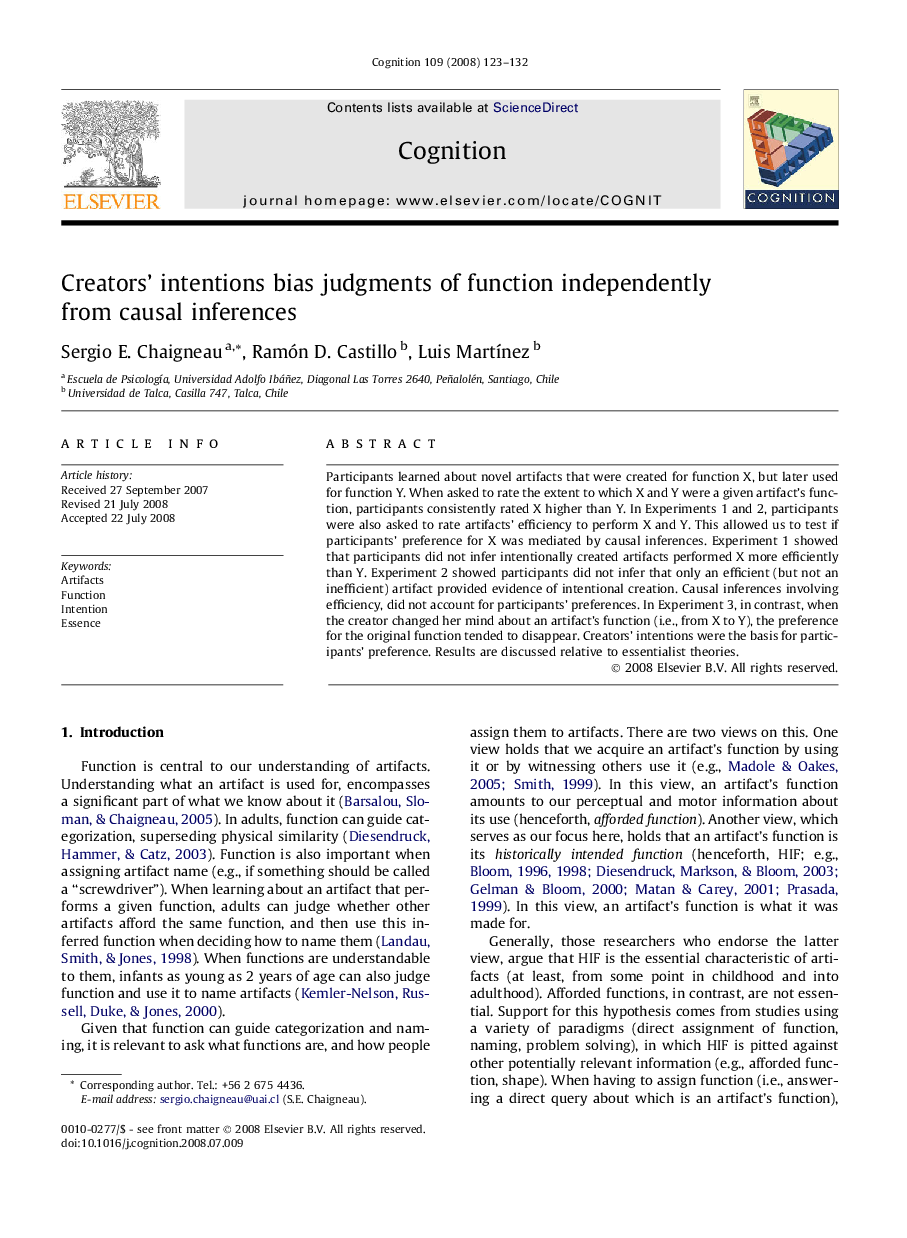| Article ID | Journal | Published Year | Pages | File Type |
|---|---|---|---|---|
| 10458034 | Cognition | 2008 | 10 Pages |
Abstract
Participants learned about novel artifacts that were created for function X, but later used for function Y. When asked to rate the extent to which X and Y were a given artifact's function, participants consistently rated X higher than Y. In Experiments 1 and 2, participants were also asked to rate artifacts' efficiency to perform X and Y. This allowed us to test if participants' preference for X was mediated by causal inferences. Experiment 1 showed that participants did not infer intentionally created artifacts performed X more efficiently than Y. Experiment 2 showed participants did not infer that only an efficient (but not an inefficient) artifact provided evidence of intentional creation. Causal inferences involving efficiency, did not account for participants' preferences. In Experiment 3, in contrast, when the creator changed her mind about an artifact's function (i.e., from X to Y), the preference for the original function tended to disappear. Creators' intentions were the basis for participants' preference. Results are discussed relative to essentialist theories.
Related Topics
Life Sciences
Neuroscience
Cognitive Neuroscience
Authors
Sergio E. Chaigneau, Ramón D. Castillo, Luis MartÃnez,
